The power of digital advertising: how to reach a wider audience
In the history of advertising, the first-ever written ad was found in the ruins of Thebes in Egypt. It was a Papyrus created in 3000 BC by a slaveholder trying to find a runaway slave while also promoting their weaving shop.
Advertisements are a guaranteed method of reaching an audience which may come in the form of print, display or digital. By creating an engaging ad, and spending enough to reach your target users, advertisements can have an immediate impact on business. This effect could be seen in improved trade or boosted brand recognition, among many different metrics. An advertising strategy typically includes a KPI to measure this impact.
In this article, you’ll discover the key strategies for expanding your reach through digital advertising.
What then is digital advertising?
Digital advertising refers to marketing through online channels, such as websites, streaming content, and more. Digital ads span media formats, including text, image, audio, and video. They can help you achieve a variety of business goals across the marketing funnel, ranging from brand awareness to customer engagement, to launching new products and driving repeat sales.
The field of digital advertising is relatively young, in comparison to traditional channels such as magazines, billboards, and direct mail. The evolution of advertising isn’t just about what the ads look like or where they appear, but also the ways they’re built, sold, and measured.
The primary differences between digital advertising and traditional advertising are flexibility and precision.
So what are the key strategies for expanding your reach through digital advertising? Let’s have a look.
1. Targeting specific demographics
If you’re trying to please everyone, you’re pleasing no one. Right? It’s also true for your marketing, if you’re trying to reach everyone; you’re going to reach no one. This simply means if you try to reach everyone with your ad and message it won’t resonate with anyone if you don’t have a specific audience in mind.

If you’re not incredibly clear on who your target audience is for your branding in general, for a specific marketing channel, or for a certain campaign you need to take a step back to identify it. You can determine who your target audience is by looking at who is engaging with your product, your brand, and your marketing. Here’s how:
- Interview your customers
- Audit your social following
- Review your marketing performance metrics
- Take notes on your competition
- Define who your target isn’t
And here’s a closer look at each step!
- Interview your customers
First, look at the demographics of your customers what are their job titles, where do they live, how old are they? Are there any patterns that emerge as you do so? Pay careful attention to patterns with your loyal, repeat customers. Then see if there are patterns in your one-time customers.
Next, it’s time to talk to your customers. This is the best way to get an idea of why they love your brand, your product, or team. That’ll help you with your positioning, including the benefits you’ll highlight in your copywriting and conversations.
It’s a great time to ask where your customers are spending their time and getting advice. Is it certain Instagram influencers, industry newsletters, or trusted company blogs? These customer insights are great data points to have, because you can prioritize these channels for your marketing. - Audit your social media Followers
According to Sprout Social, the most common reasons people follow brands on social channels are to get access to discounts, to keep up with company news, and to find out about new products or services.
You won’t have the same access to your social followers as your customers. If you still want to do an interview, make sure it’s a quick survey with super specific questions. Otherwise, focus on demographics and behavior.
Here are some things to consider:- Age
- Career
- Location
- Activity Level
- Income
The good news is that you can use a tool even a free tool to analyze this data. Buffer, for example, also offers a free tier.
- Review your marketing performance metrics
The next existing audience you need to take some time to dig into is your website visitors. Who is reading your content already? Who is downloading your whitepapers? Who is engaging with your videos?
Google Analytics is the natural place to start when you’re looking for this type of information. You can learn:
-
- Demographics: See how your users break down by location, including country and city.
- Where users are coming from. Is Twitter a big referral source? Is it a niche industry news site? A certain blogger? This gives you more information about where to target your marketing campaigns.
- Which topics resonate with them. What is and isn’t of interest to your website visitors can provide clues on who your target audience is and how to appeal to them.
- What terms they’re searching. Find out what they’re looking up in Google that is leading them to your site.
- Take notes on your competition
Regardless of your product, your offering, and target audience, you have competition. And you can use them.
Take a look at who your competitor is targeting in their marketing. Where are they advertising? Facebook? Instagram or Twitter? Who are they addressing in their ads? What pain points are they stressing? Analyze their ads, their messaging, and their brand to put together a target audience and see how it compares with yours including how it overlaps and how it differs.
The overlap might help you see, and the difference? That’ll help you better articulate your brand’s differentiation.
- Define who your target isn’t
So for this last step, take a look at all of your information, your customer interviews, your social following, your website visitors, and your competition’s comparable audiences. Then identify the gaps that you definitely don’t serve.
Are you a pet store that doesn’t stock reptile tanks? Your target audience does not include iguana owners.
Are you selling boozy milkshakes? You’re not trying to target anyone under 21, even if that might be hard to tell in your images.
Can you only serve US customers? Then your target audience is not anyone operating outside of those bounds.
Setting your parameters will help guide your marketing and even your business strategy.
2. Utilizing retargeting ads
It turns out that 97% of people who visit your site for the first time leave without buying anything, and then they’re lost forever. Unless you can bring them back.

Retargeting campaigns remind your website visitors of your products and services after they leave your website without buying. After visiting specific pages, it allows you to retarget them and show your visitors relevant visual or text ads when they visit other websites. Retargeting campaigns could be done with the help of Google Ads, Facebook retargeting, LinkedIn Ads and other retargeting advertising platforms. Serious marketers today use retargeting as a vital tool to connect with their customers and increase their sales and customer loyalty.
97% of people who visit your site for the first time leave without buying anything, and then they’re lost forever.
Before someone decides to buy your product or service, they need to feel like they know you. A good marketing rule of thumb to help customers make up their mind about purchasing is to ensure they hear your message at least 7 times. Retargeting builds visibility for your brand, allowing you to reach an audience that has already expressed interest in your products.
- Retargeting is meant to be a long-term marketing strategy for businesses that already have a following. If your website gets at least 100 monthly visitors, Google remarketing ads are definitely for you.
- Promoting bestsellers. Retargeting ads are a simple, effective way to showcase your top-selling products. And promoting items your current customers love can even help convert visitors into customers and increase ROI for your ads.
- Introducing new collections. People who are interested in your brand and visit your site are a great audience to target when you’re launching a new product collection. Your retargeting ads will catch their eye wherever they go online; creating a clear path back to your store so they can check out what’s new. This can be done with display campaigns using Google AdWords or through a Facebook retargeting campaign.
- Moving inventory. As an online seller, you’ve probably dealt with slow-moving inventory at one time or another. Retargeting ads are a low-budget, low-effort way to showcase surplus products from your store to potential customers.
- Building brand awareness. Most people need to feel they know you before they decide to buy your product or service, and retargeting ads keep your brand top of mind for potential customers who aren’t ready to purchase when they first visit your site.
3. Optimizing your ad placements
Ad placement refers to the specific spots online where your paid ads appear.
You could run ads in the margins of a sports website, at the top of Google search results, or in users’ Twitter feeds, among other places. Don’t confuse this term with Ad Rank, which refers to where your paid ads rank relative to other ads in search results.
It’s important to keep track of where you place each ad. The placement of your ads is critical to the success of your campaigns. Consider this: If you’re browsing an article about dog training techniques, and you see an ad for a new washer, are you going to be interested?
Similarly, your target audience won’t respond well to your ads if you display them at the wrong time and place. You want to optimize the way you place your ads and take advantage of all the different online locations where you can do that.
Best Strategies and Points to Consider For Ad Placement
- Remember Who Your Users Are
Are you going ahead to place ads on your web page? Then there are a few questions you have to ask yourself- Will navigation of my site be easy enough for the users?
- Are all the buttons of navigation clear and self-explanatory?
- Is the content I have unobstructed?
Once you have answered yourself, you can move forward towards considering what effect your ads can have on user experience.
As an example, you may choose to put the ads in an isolated column, often called the whitespace–separated from the primary content. This will also make sure that the ads can be easily distinguished from the content. You can also do this by adding the text “Advertising” above the banner or with increased padding.
- Start With the Revenue Model
Your revenue model influences your strategies to improve placement. For instance, if you deal with CPM, then you need to work on improving the impression number and quality.
Similarly, if you have a CPC model, your strategies should revolve around improving the click-through rate on creatives. If you deal in both, then find which model brings the most dollar and prioritize that one. Knowing your revenue model influences the next steps you take to find the best ad placement.
- Check Out Advanced Ad Formats
Banners on the sidebar are often the top-performing placements. So evidently, the most viewable position for an ad is the right side of the ATF. If you want to take it up a notch, you may also go for sticky sidebar banners. The best part is that they will be sticking to the viewport and remain visible for the entire duration of the web page visitor.
One other advanced ad format is an anchor ad. They usually stick to the viewport at the bottom and remain there for the entire duration of the visit. The difference between anchor ads and sticky sidebars is that the former are vertically aligned, and the latter is horizontal. - Follow What Google Says
The quality and quantity offered by Google is the reason why it is still a leader when it comes to ad tech. It has the largest pool of sellers and buyers. Hence the data and insight presented by Google shouldn’t be ignored.
In the same context, check out the ad sizes and layouts marked as most common by Google. Here are some of the common ad sizes for display ads:- 300 x 250 – in feed between on content on the desktop webpage
- 728 x 90 – on the leaderboard with/under the logo
- 300 x 600 – sidebar sticky on the desktop webpage
Similarly, check the ad viewability standard adopted by Google. This includes data from IAB and best practices suggested by MRC mixed with Google’s own data by serving millions of impressions every minute.
4. Tracking and measuring campaign performance
Are your digital marketing campaigns resulting in conversions through your website?
Many businesses choose to spend big money on digital marketing campaigns across various channels to bring traffic to their websites. But one of the biggest and most debated challenges for marketers is to justify that spend by proving return on investment (ROI). Without knowing the performance of a particular campaign or channel, you are potentially wasting time and budget.

If you’re a digital marketer, the chances are, you’re using an analytics tool of some sort Google Analytics (GA) or Adobe Analytics, for example to track traffic to your site. Using accurate campaign tracking within GA, you are able to better measure the performance of specific campaigns and therefore are also able to make better decisions based on data collected from your site users. Before you start analysing campaigns in GA, you will need to tag them up so the campaign data can be collected.
Once you know how to track your campaigns, you need to know how to measure and gain insight from the data you collect.
A session from Google search will be assigned a source/medium of Google/organic, and a session from Yahoo search will be assigned yahoo/organic. The following mediums appear frequently and by default:
- Organic – Any search engine defined in the Organic Search settings in the Admin section. Most of the common search engines are in this list by default. However, if you spot any appearing in the Referral report, these should be added to the Organic Search settings so that the correct medium is assigned
- None – If the traffic came to the site directly. This occurs when someone enters the website URL themselves, or comes from a bookmark. Traffic coming from PDF documents, emails or apps is also assigned as direct traffic as it has no referring domain
- CPC – Cost-per-click paid search is any form of bidding campaign. If any of your traffic is coming from paid search, it will be assigned this medium
- referral – Traffic coming from any other referring domain, such as freshegg.co.uk or a forum, will be assigned under referral traffic
- social – Certain referring domains will be marked as ‘social’. This includes facebook.com, t.co, etc. If you are seeing domains such as m.facebook.com appear as referral traffic in your reports, you can create a filter for the view to rewrite m.facebook.com to have a medium of ‘social’
Any traffic coming from an untagged email could be reported as direct or referral traffic from a mail client. This is not efficient, as you want to be able to track the behaviour of email traffic – if this is lost within the direct traffic it is not possible to measure this separately.
Modifying the link in the email will allow email campaigns to appear as a medium of ‘email’ or any other medium that you assign to the campaign. This can be done for any online campaign that you are running and you can distinguish between different versions of a campaign by applying different labels to these campaign URLs.
Final Thoughts
There’s no magic formula to uncovering how to reach a wider audience. It’s all about following the basic rules of marketing and tweaking them to fit your audience and what your company is all about.
It can be understandably overwhelming to figure out where you should focus your time and resources. When you use the tips we’ve discussed, you can better organize your marketing message and identify the best channels for distribution.










